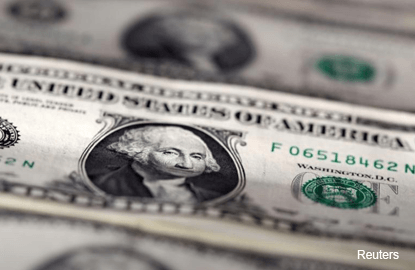
TOKYO (Feb 2): The dollar slipped on Thursday, edging back toward recent lows after the Federal Reserve disappointed investors hoping for a more hawkish policy stance, while the Australian dollar rallied after data showed that nation had booked a record trade surplus last month.
The Aussie gained 0.6 percent to $0.7620, after earlier scaling $0.730, its loftiest peak since November 2016.
Data from the Australian Bureau of Statistics showed a trade surplus of A$3.51 billion ($2.68 billion) in December, handily outpacing forecasts of A$2.2 billion, as surging commodity prices showered the resource-rich nation in cash.
The Fed on Wednesday presented a relatively upbeat view of the U.S. economy at its first meeting since President Donald Trump took office, though the greenback came off session highs overnight when policy makers noted some market-based measures of inflation were still low.
The dollar index, which tracks the U.S. currency against a basket of six major rivals, edged slightly lower to 99.607 , back toward a more than seven-week low of 99.430 plumbed on Tuesday.
Against the yen, the dollar was buying 113.03, down 0.2 percent though well above Tuesday's low of 112.08, while the euro edged up 0.1 percent to $1.07820.
While the Fed refrained from giving any explicit rate-hike signals or the timing of its next move, it said job gains remained solid, inflation had increased and economic confidence was rising.
But its relatively brighter view came against a backdrop of concern about the potential impact of Trump's protectionist stance, as well as his recent comments about currencies.
On Tuesday, Trump and a top adviser strongly criticized Japan, China and Germany, claiming they had all devalued their currencies to benefit their own countries.
"As the U.S. economy accelerates, some believe it can tolerate a stronger dollar, but I don't think that's true. I don't think the U.S. government will tolerate it," said Masafumi Yamamoto, chief forex strategist at Mizuho Securities.
While the dollar initially rallied after Trump's election as markets seized upon his promises for stimulus steps, tax reform and deregulation, it has tended to slump whenever he has talked about withdrawing from international trade agreements.
"It's still a tug-of-war, between protectionism and stimulus hopes," Yamamoto said.
Data on Wednesday reinforced views of economic improvement. U.S. factory activity accelerated to more than a two-year high last month.
The ADP National Employment Report also showed private employers added 246,000 jobs in January, up from 151,000 in December. The nonfarm payrolls report on Friday is expected to show employers added 175,000 jobs last month, according to the median of 102 economists polled by Reuters.
The Fed has forecast three rate increases in 2017. While economic improvement would prompt it to raise interest rates, the market is pricing in less than a 50 percent chance of a hike until the Fed's June meeting, according to the CME Group's FedWatch Tool.
"If the Fed does move in March, we could see as many as four hikes in 2017, and as long as data remains supportive, very likely three hikes," BlackRock Inc's chief investment officer of global fixed income Rick Rieder said in a note. - Reuters